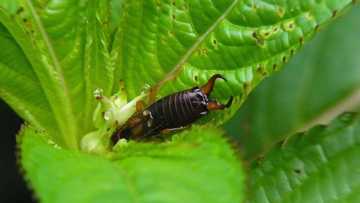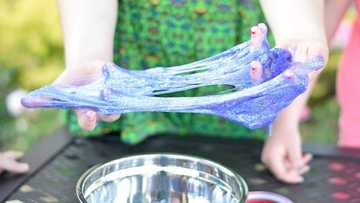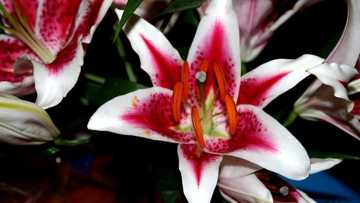Gerbera: planting and care at home and in the garden
Gerbera can help to create a cozy and festive atmosphere even in the most modest and grey apartment. In nature there is a great variety of species of the flower, which can be grown in the garden or at home. We reveal the little secrets and basic rules for caring for gerbera on the street and at home. The proposed rules will make it possible to dress up the corners of the apartment or the plots in the yard and give them optimistic colors.
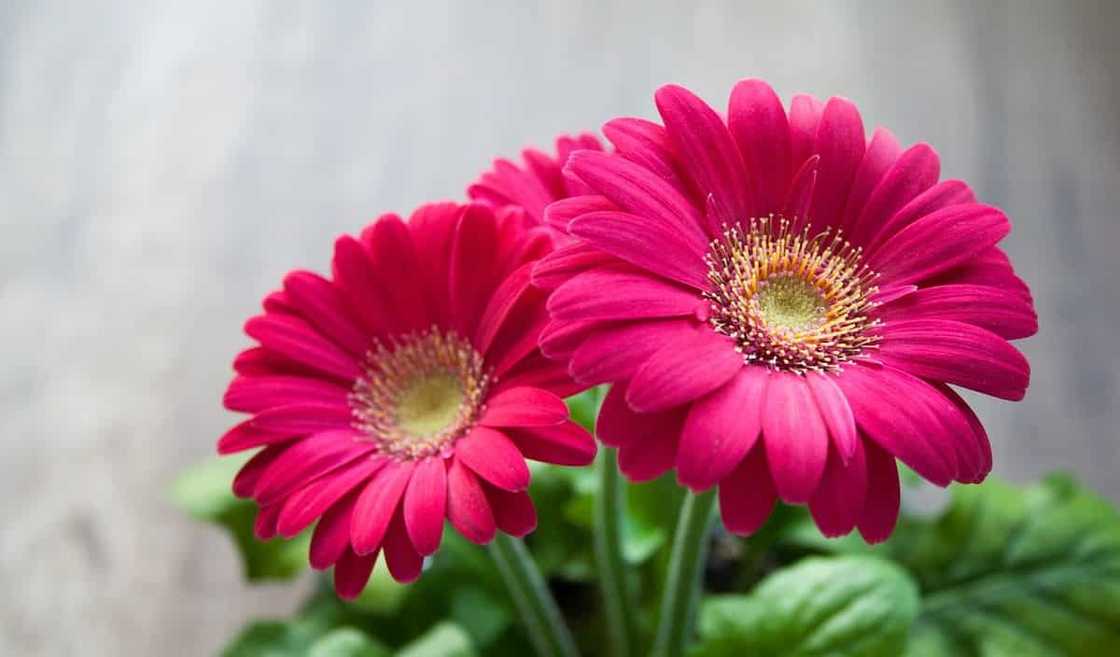
Source: UGC
Gerber Room: Care
Gerbera is a flower that has long been popular in home floriculture. It is a heat-loving plant that requires a warm microclimate and good lighting, so it is important to take care of the gerbera's location in the apartment in the first place.
This plant will look great in any room because it is beautiful and compact. Gerbera in a pot looks good in the bedroom, in the kitchen, in the living room and so on. The main thing is that the room is warm and well lit.
It's a safe plant for allergy sufferers and it's not afraid of droughts. It is recommended to place the flower in a well-ventilated area, as it needs fresh air. In warmer seasons, it is best to take the gerbera out to the balcony or veranda.
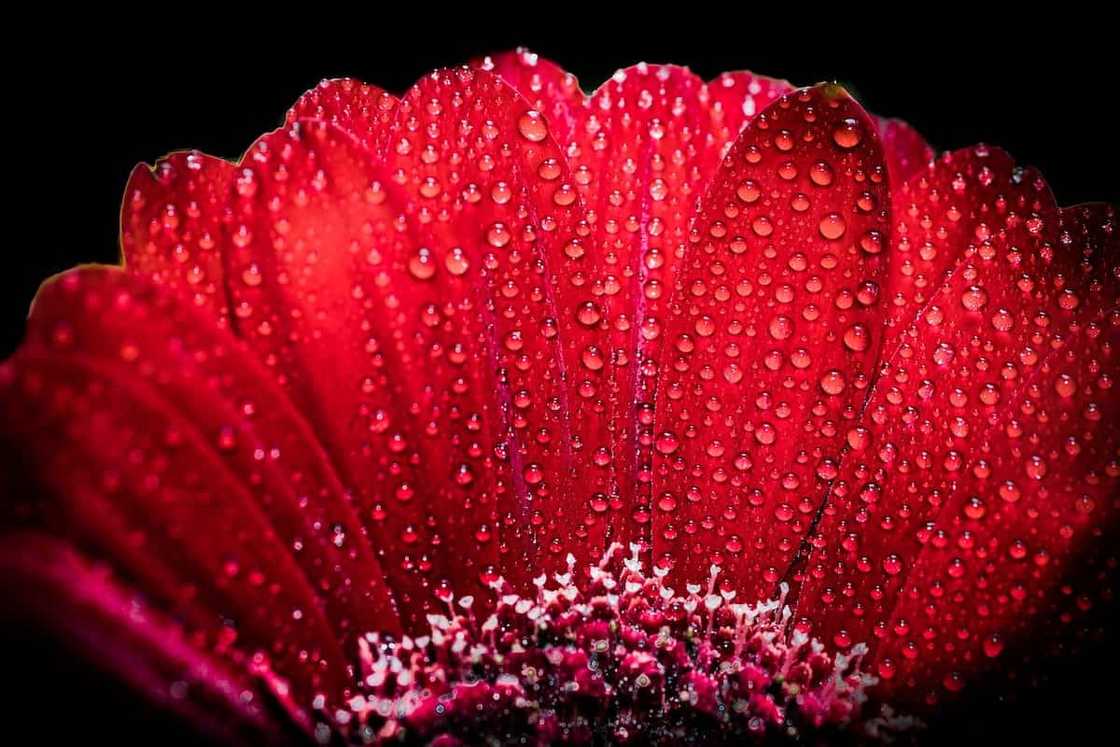
Source: UGC
Be sure to consider the following care recommendations:
Lighting and Temperature
The flower should be placed on the window sill that looks east or west. Other places with good lighting will also work well. The sun helps them form a lush crown of leaves and bloom.
If such plants are on the south window sill, they should be protected by blinds and curtains in the afternoon and afternoon. You can darken the gerber flower a little by creating scattered sunlight.
It is important that the sun's rays reach the plant in an adequate amount, but it should be protected from direct exposure. It should be understood here: indoor gerbers love direct sunlight, but it is important not to overdo it.
Gerbera flowers grow in a rather warm climate. Their optimal light day should be 12 to 13 hours a day. This regime should be maintained for a year. Therefore, from October to April, it is advisable to use auxiliary lighting.
Special plant lamps, LED or fluorescent lamps are available. They should be placed above the pot at the right angle and at a height of about 80 cm. Adequate lighting levels are important for healthy plant growth.
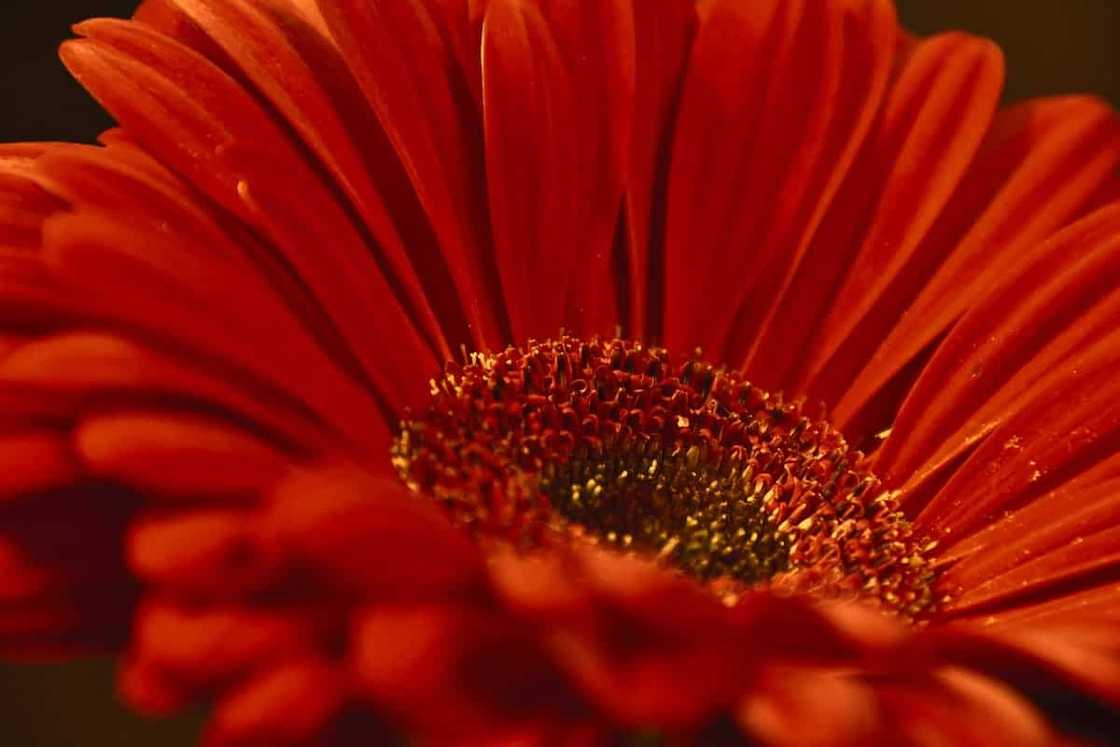
Source: UGC
Behind the gerber flower, room care includes not only maintaining the lighting, but also the temperature. The following temperature regimes should be distinguished:
- 20 / 25 ° C in the day and 18 / 20 ° C in the night: optimum temperature during the flower growing and flowering period. This figure corresponds to the temperature considered to be natural in the native gerbera;
- 14-16 ° C - this is the temperature a home plant needs during the winter period, it is also important to reduce watering;
- 12 ° C, the flower falls into hibernation. When this happens, flowering is eliminated, all processes are slowed down;
- 8-10 ° C are critical for a domestic plant (in its home country, such a flower could survive a lower temperature because its roots are in warm soil).
It's worth noting that indoor gerbera do not like sharp temperature changes, especially during flowering. At this temperature, the leaves lose their tone and the inflorescence wilts rapidly. When this period comes, the plant must be protected:
- blackout;
- transfer to a cool place;
- ventilate the room regularly.
Irrigation, soil and air moisture
When flowering and growing season arrives, the indoor gerbera needs regular watering. It is important to maintain the same level of irrigation each time. The soil at the depth should be slightly moist, and at the surface it should be dry. The following irrigation pattern can be followed:
- For the first four days, soil must be kept moist.
- The next two days should be interrupted so that the soil dries up a little.
It is also important to take into account the season. If it is cold outside, water should be reduced and increased in heat. Water through a pallet is also possible, but it is important to remove excess liquid that has not absorbed into the soil after 20-30 minutes.
Homemade gerbera is also water sensitive, so it is important to use a soft liquid. This could be snowy, rainy or boiled water that is set aside for a day. It must be at room temperature (not less than 20 ° C). This will prevent the emergence of fungi and rotting roots in summer.
It is recommended to loosen the soil in the pot to make it easier for oxygen to reach the roots. The soil itself can be purchased in the shop. It should be universal and designed for flowering plants. Gerbera's homeland is South Africa. There, the soil is rich in minerals, but there is virtually no organic material.
The soil can be prepared by hand. It is important to make it loose, nutritious, and with a weak reaction. This should include:
- Take leafy land, sand with large grains, peat crumbs, and small pieces of charcoal.
- Stir and add the pine bark.
- Remove the overload or compost from the mix (there should be a minimum level of organic matter!)
This is enough to create a nutrient-rich, fertile, ventilated and permeable soil, in which liquid and air will flow freely deep into the soil.
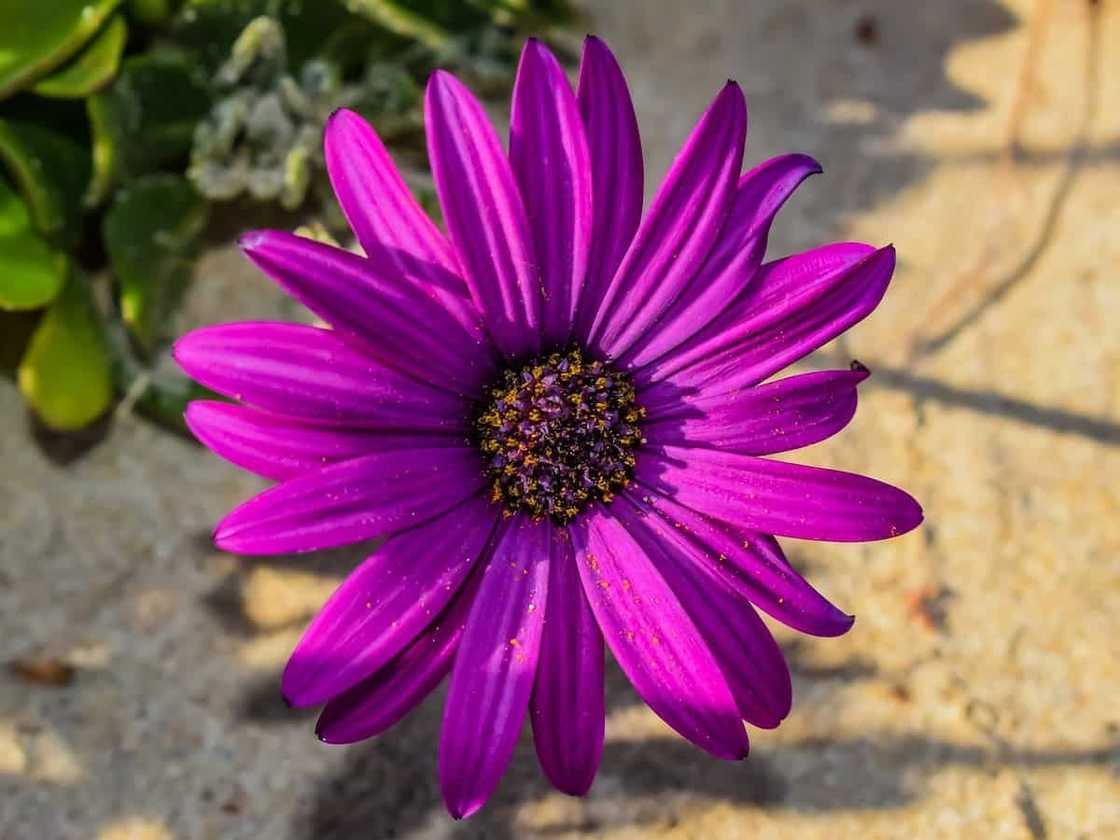
Source: UGC
An important component of healthy plant growth is the level of moisture. It should be 70-80%. During the heating season, one should be vigilant, as humidity can plummet. If that happens, it is important to raise it in every possible way.
The gerbera flower should be cared for at home without direct spraying. This applies to both the leaves and the flowers themselves. But it is important to refresh and spray the space nearby regularly. For a favorable environment, mist and a watery hissing can be created around the plant.
Humidity can be raised in a variety of ways:
- Wet the towel and cover the batteries.
- Next to the gerbera, put other plants that can evaporate moisture.
- If the flower is in a deep pot, wet keramsite, pebble, coconut fibres, or sphagnum moss should be poured at the bottom.
- Put cold water tanks around the plant.
- Use a conventional humidifier, which is used in everyday life.
The key is not to overdo it and create too much humidity. If humidity levels reach or exceed 80-85%, the flower becomes vulnerable to fungus and other infections. It is important not to delay and immediately lower the percentage to favorable. For this purpose, you can ventilate a room, cancel spraying and reduce the amount of irrigation.
Pot and fertilizer
The gerber flower is cared for at home through the use of fertilizers. In particular, this concerns the active growing season. During the warm season, from spring to autumn, it is important to feed the plant every two weeks. Natural organic is not suitable for this, as the flower does not like it. It is better to use mineral-based supplements.
I recommend buying a complex fertilizer and following the instructions for use. It is also possible to consult a specialist, since, at different times in a plant's life, different supplements should be used. It is important to pay attention to the composition. When the flowering season has arrived, use potassium and phosphorus supplements. My experience has never let those who have sought advice down.
In the home environment, a gerbera in a pot, which requires careful care of the favorable microclimate, must be kept in a deep container. The pot should be small, 2-3 cm wide at the root level. The volume should range from a litre to a litre and a half.
It is important to create a tight environment, which is key to abundant blooms. The best material for a pot is considered to be unglazed ceramics, which allow good air flow. In winter, it is recommended to create insulation using wood or foam to prevent hypothermia.
Transplant
The chosen location is dug up before landing. They get rid of all weeds with the addition of sand and peat. A solution of weak potassium permanganate is also added to the soil, which will help to rule out possible diseases in the future.
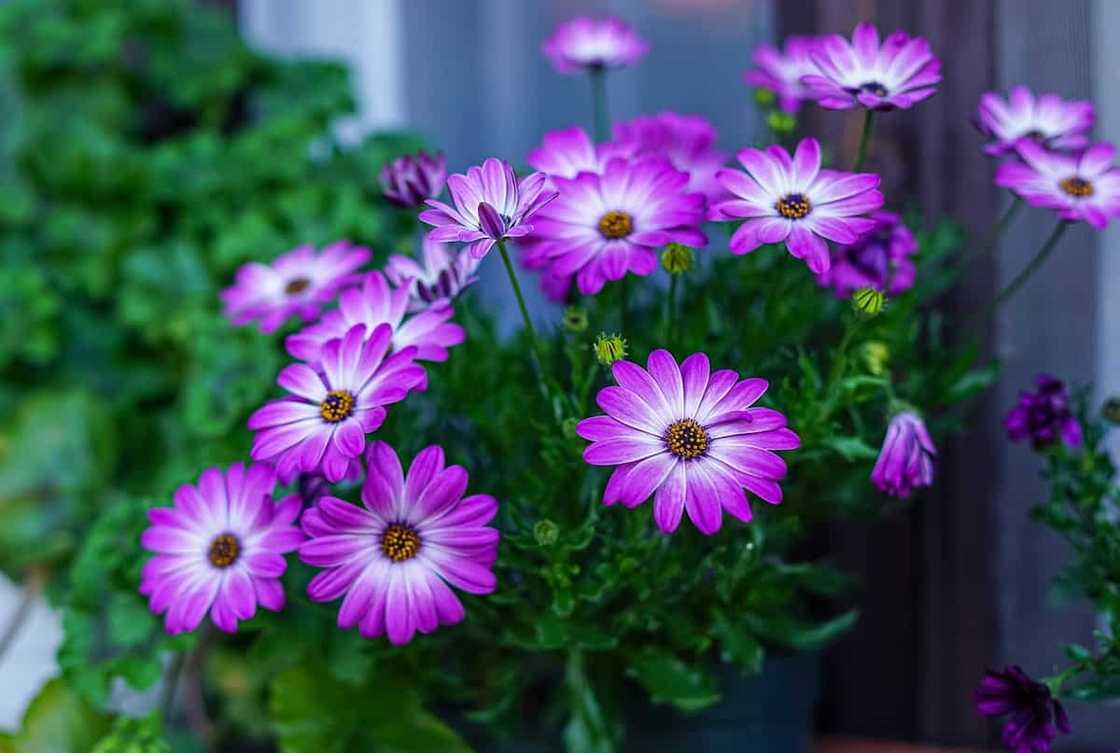
Source: UGC
Spraying is mandatory, as there are many negative effects.
Nature has pests and pathogens. It is important to perform prophylactic procedures using fungicides and insecticides, which can be purchased in gardening shops. So the flower will remain beautiful and healthy for a long time.
Dung or overfeed is not suitable, as it can cause fungal disease. It is important to use only minerals that are best suited for flowering gerbera. It is important to make the feed every two weeks.
For such a light-loving and warm plant, it is important to ensure a safe winter. If it grows in a southern climate characterized by warm and mild winters, it would be sufficient to build protection in the form of a greenhouse in the open ground.
When the flowering period is over, feed should be stopped, watering reduced, and flowerpots trimmed. Cover a fertilized area with straw or fallen leaves of healthy trees. If the gerbera grows in the middle climate, it is best to transfer it to the pot and hide it in a warm room.
You learned how to care for gerbers at home and outdoors. The proposed solutions will help to get a healthy flower that will delight you with its colors and decorate gray areas of the apartment for a long time.
The gerbera flower is cared for at home immediately after purchase, as it needs to be transplanted from the store transport pot. This procedure must be performed after the plant has adapted to new conditions. This can take 2 to 3 weeks.
On the Internet you can find photos from Gerber flower transplantation that demonstrate this process. It goes like this:
- The flower is carefully removed from the transport pot, and the store substrate is shaken and cleaned. Use a wooden stick to do this. It is important not to cut or prune the roots.
- They prepare a new pot by disinfecting it.
- Drainage holes are created at the bottom of the vessel.
- They do a layer of drainage using ceramsite. The layer thickness should be between 2 and 3 cm.
- Fresh and sterilized substrate is poured over the top. The new layer should take up about a third of the pot.
- In the centre, put a bush on the substrate and carefully fill in the roots around the edges. It is important not to allow the root neck to sink too deep. The root socket should be 2-4 cm above the ground.
This was the first transplant, and a year later, there has to be a routine procedure to change the pot. This time is sufficient for the flower to germinate properly. It is important to carry out the transplant during the rest period between February and March. It is also possible to perform the procedure at the end of autumn, when the flowering season has ended.
For transplants, the best approach is a transshipment method that requires careful handling of the roots. When the plant is transplanted, the substrate can be compacted and the flower watered moderately. For the next 3-5 days, hide it from direct sunlight.
After a week, Gerber may not look good. To correct this, you need to spray space next to it and create a small greenhouse where it will grow stronger and grow further.
Gerbera: The Treatment
The flower can be exposed to a variety of diseases that are caused by bacteria, viruses or fungi. This can cause significant plant weakness and eventual death. Care of the gerbera flower must therefore include the swift removal of any plant ailments.
The most common diseases are:
- A fungal infection of the root system should be transplanted into a pre-prepared soil.
- Dew with a milky consistency can be eradicated with sulphur-containing chemicals.
- Rooting of the root neck requires improved drainage and proper watering.
- Gray rot should be treated with gerbera (systemic fungicide).
How to look after herbera in the garden
The most popular open-soil flower variety is the Jameson gerber, from which other species have been derived.

Source: UGC
Garden care includes the main factors: lighting, irrigation, humidity, soil selection, spraying, fertilization, wintering. Here is a feature of full care:
- Gerbera, whose cultivation should be built on lighting, is a light-loving plant.
Choose a spot on a plot with the best light. Any dimming will severely affect plant development. In the summer, protect the flower from the scorching sun's rays, and from autumn to spring, it is recommended to transplant the flower into a pot.
- Humidity should be at elevated levels, but direct spraying on flowering should be avoided. It is also important to avoid excess and stagnation of liquid in the ground.
The irrigation water should not be very different from the ambient temperature, because the plant does not tolerate strong contrasts. The frequency of irrigation depends on the weather. If it rains, you don't need much watering. You can also navigate the topsoil.
- Gardeners choose soil in their garden that contains a neutral concentration of acid. The ground should allow good passage of air and water.
Before landing, the chosen spot is dug up. Remove all weeds, adding sand and peat at the same time. Also, a solution of weak potassium permanganate is added to the soil, which will help to prevent possible diseases in the future.
- Spraying is mandatory because of the many negative effects.
There are pests and pathogens in nature. It is important to carry out preventive procedures using fungicides and insecticides, which can be purchased from horticultural stores. So the flower will remain beautiful and healthy for a long time.
- Dung or overfeed is not suitable for feed, as it can cause fungal diseases. It is important to use only the minerals that are best suited for blooming gerbera. It's important to feed every two weeks.
- For such a light-loving and warm plant, it is important to ensure a safe wintering season. If it grows in a southern climate characterized by warm and mild winters, it will be sufficient to protect it in the form of a greenhouse in an open-air setting.
After the flowering season has ended, feeding should be stopped, watering reduced and flower-bearing plants trimmed. Cover a fertilized area with straw or fallen leaves from healthy trees. If the gerbera grows in mid-climate, it is best to transplant into a pot and hide in a warm room.
You learned how to care for gerbers at home and outdoors. The proposed solutions will help to get a healthy flower that will delight with its colors for a long time and decorate the gray corners of the apartment.
Source: KAMI.com.gh


